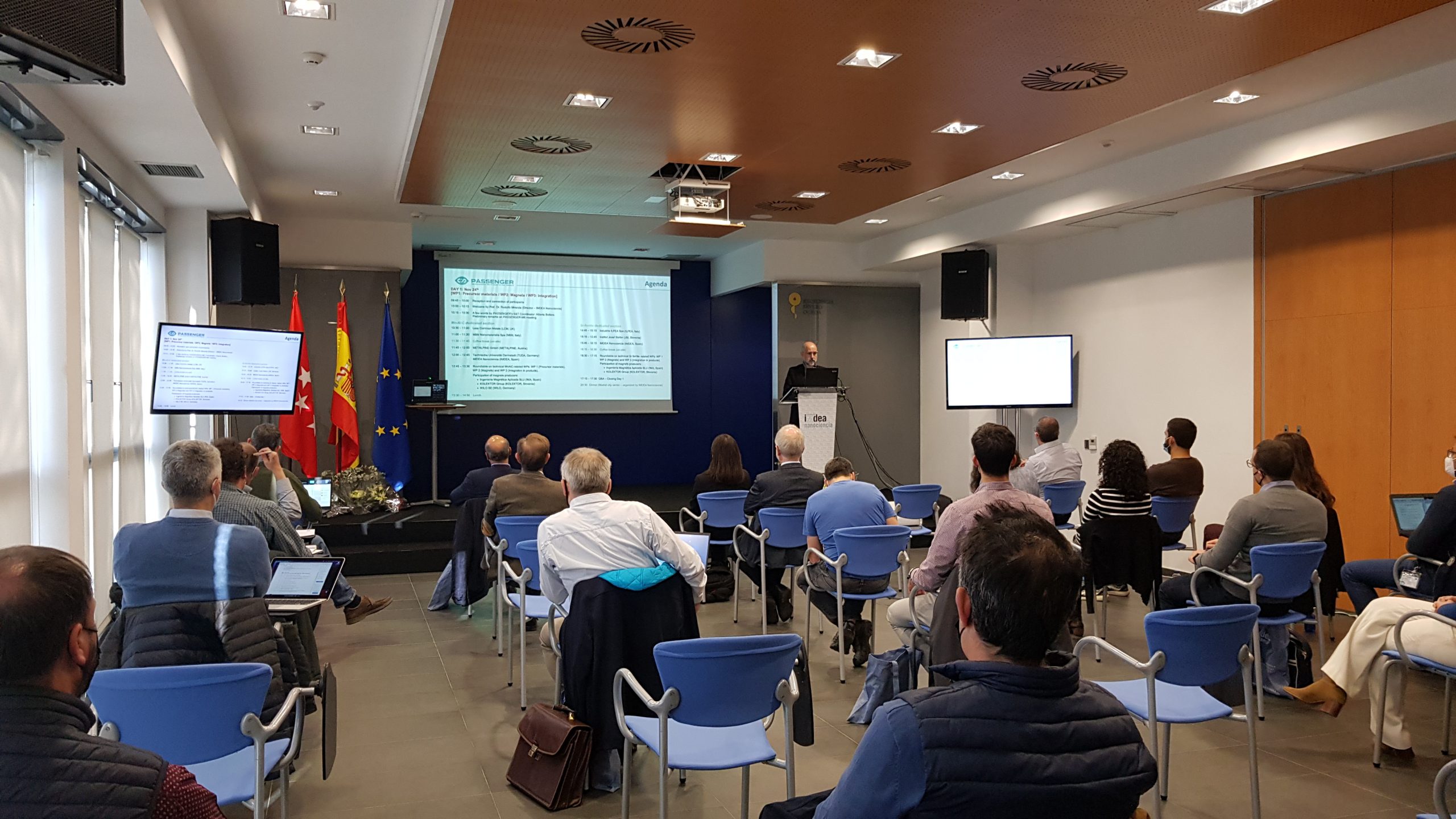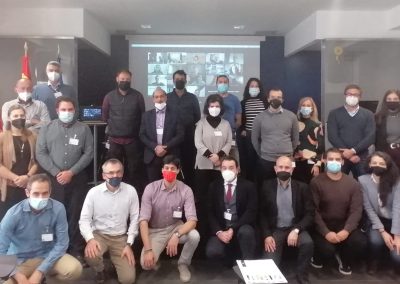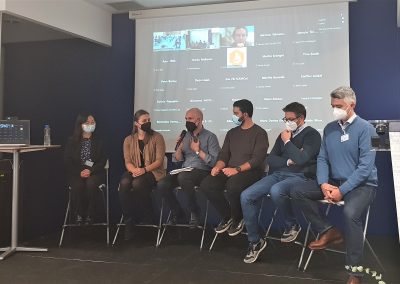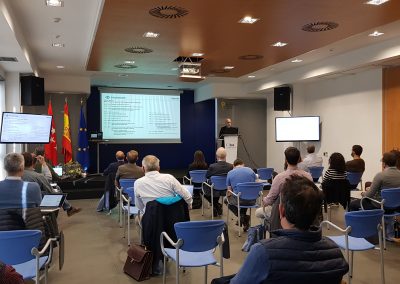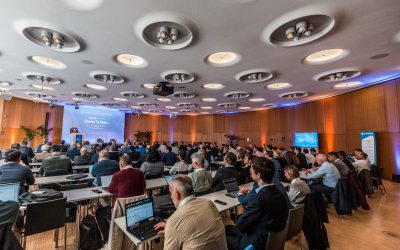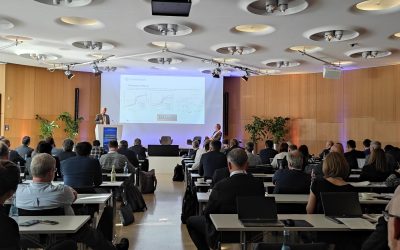24-25 November 2022, Madrid and online
From 24 to 25 November, PASSENGER consortium gathered to review the project’s development after its six first months of activity. The meeting was held in a hybrid format, and despite the current restrictions gathered 25 participants in person within the IMDEA Nanociencia premises in Madrid. 22 other partner representatives followed the event online. After many months remotely preparing the project, then kickstarting it, it is little to say that partners much appreciated meeting in person!
After a warm welcome by Prof. Dr. Rodolfo Miranda, Director of IMDEA Nanociencia, the agenda focused on the latest development of the project’s first stage.
PASSENGER’s research is dedicated to substituting REE-permanent magnets with materials widely available in Europe: improved strontium ferrites (SrFe12O19) and manganese-aluminium-carbon (Mn-Al-C). The first step is to produce test these new materials.
Producing and testing Mn-Al-C as a substitute to REE
Less Common Metals (LCM) in the UK, is the world leader in the manufacture and supply of complex alloy systems and metals and is leading the up-scaled fabrication of the Mn-Al-C alloy by casting. LCM updated the consortium on their progress in exploring the alloy’s properties to develop its full magnetic potential. They are supplying the newly produced as-cast alloy to METALPINE, who provided updates on how they will transform the alloy into MnAIC powder via gas-atomization.
MBN Nanomaterialia then informed the consortium on their first task consisting in producing nanostructured MnAlC powder from the as-cast ingots provided by LCM. Progress on reducing particle size through different milling approaches was detailed.
Representatives from the Technical University of Darmstadt (TUDA) and from IMDEA Nanociencia are responsible for the structural, microstructural and chemical characterizations of the samples produced by LCM and MBN. After introducing the MnAlC material system, TUDA and IMDEA presented the results of their investigations on the samples, as well as conclusions for future work.
Presentations on the research related to MnAIC were followed by a roundtable with representation of the key players involved in MnAIC materials synthesis (WP 1) as well as those working on magnet production (WP 2) and integration in products (WP3). Companies LCM, METALPINE, WILO and KOLEKTOR were very active in the discussion.
Producing and testing Sr-Ferrite as a substitute to REE
The afternoon presentations and discussions focused on the production and testing of improved ferrite, the second material explored within PASSENGER.
ILPEA presented the Sr-ferrite samples delivered to partners, its main characteristics and the testing method used at ILPEA. They also explained to the consortium how with the other work package members they work towards improving the Sr-ferrite powders.
JSI is involved in in-deep characterization of ILPEA’s ferrite samples and their magnetic properties on selected ceramic samples to compare with ILPEA’s testing method. Their representatives updated the consortium on their progress these past months.
Finally, IMDEA works on improving ILPEA’s ferrite samples’ coercivity through ball milling (short milling times exploration) applied to 4 different samples, followed by heat treatment. They also shared their progress in characterizing powder samples (precursors and milled samples), showing a high-quality ferrite material through extremely short processing times.
As for discussions on MnAI, the presentations were concluded with a roundtable and open discussion on technical Sr ferrite- related work packages: precursor materials, magnet production and integration in products, with the participation of magnets producers: Ingeniería Magnética Aplicada SLU (IMA), KOLEKTOR.
Sustainability
The next day was devoted to news from work packages devoted to Raw Materials. Sustainablity, techno-economic, health and safety assessment (WP4, covered by ICAMCyL), Dissemination and communication (WP5, European Science Foundation) and Industrial exploitation, pilot replication and commercialization (WP6, Monolithos, MNLT).
MNLT, responsible for exploring the sustainability and recycling potential of new technologies and magnets, provided an overview of the global permanent magnet market. Driven by the electromobility sector, market analysis shows that the permanent magnet market is expected to grow considerably in the next years, with expected e-vehicle sales at 44 million per year until 2030. Europe alone accounts for 1.4 million passenger e-cars already in 2020, with ca 1.5 kg magnets in each e-car.
Europe, however, imports 16,000 t of magnets every year (mainly NdFeB) from China for commercial applications. The materials are sold with the entire value chain produced in China, instead of even partial REE/magnet production-recycling abroad. Europe on the other side, produces only about 1 kt/a magnetic materials at 6 production sites.
The challenges addressed by the PASSENGER project are considerable, and will prove to be make a substantial difference in the European landscape of electromobility, but also for the production of wind turbines, pump motors, generators, and large industrial equipment.
“Working every day on improving the ferrite powder, it was good to see how our work will be used further on in the project by others and be applied to concrete use.” Said Marta Hernández, researcher at IMDEA Nanonciencia.
Partners left the meeting with an overall view of the full supply chain. Many also underlined the importance of meeting different partners, seeing different aspects of the project, and exploring future challenges and requirements. Looking forward to the news from the next stage in 2022!
